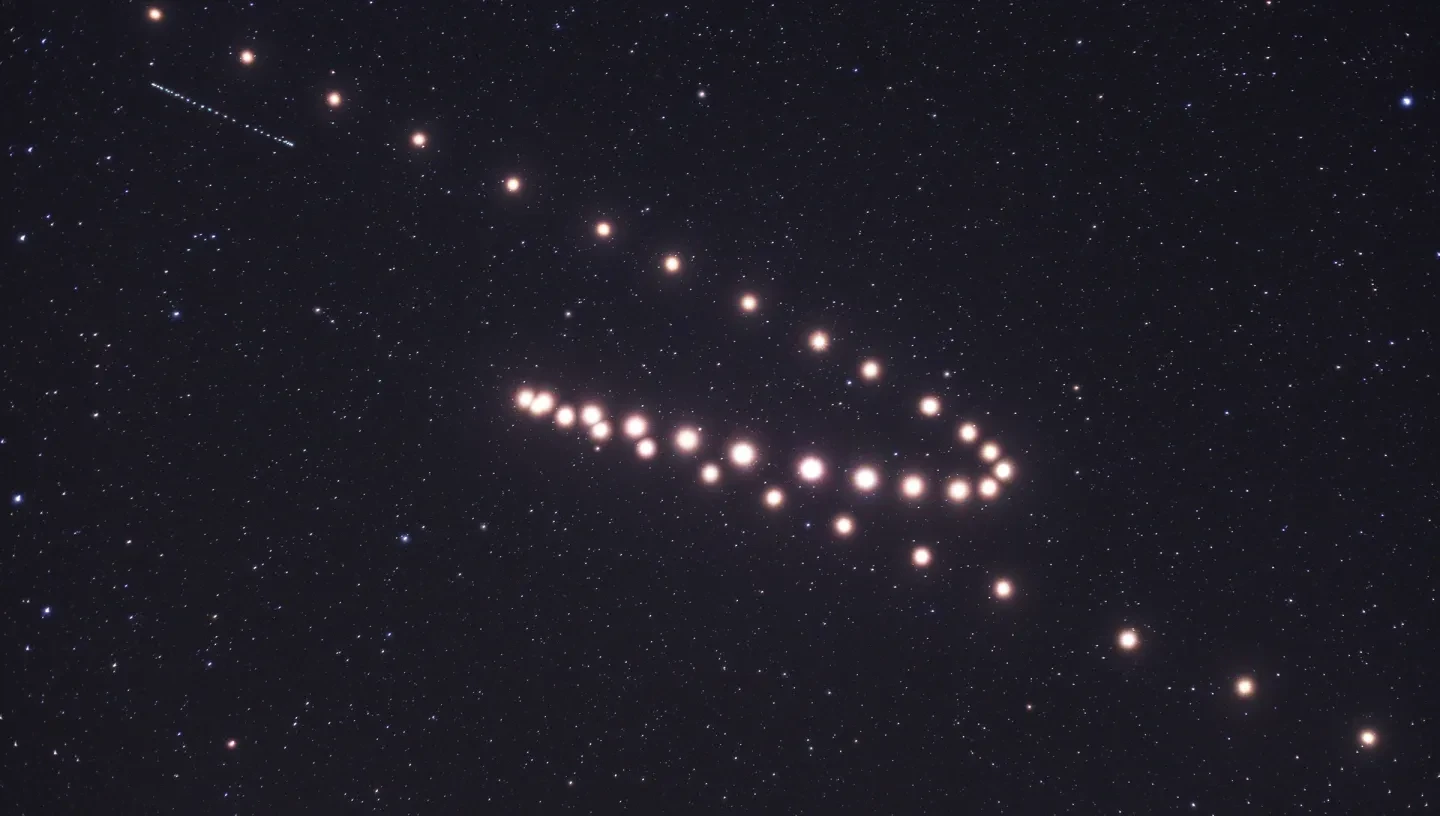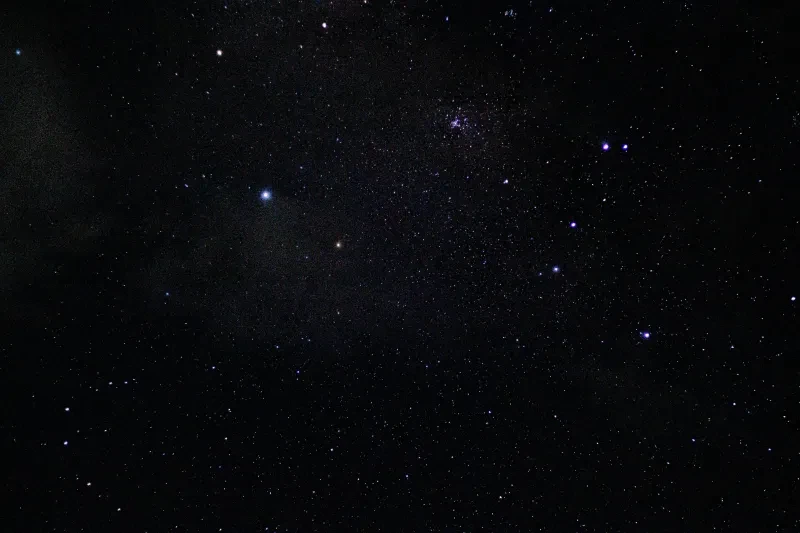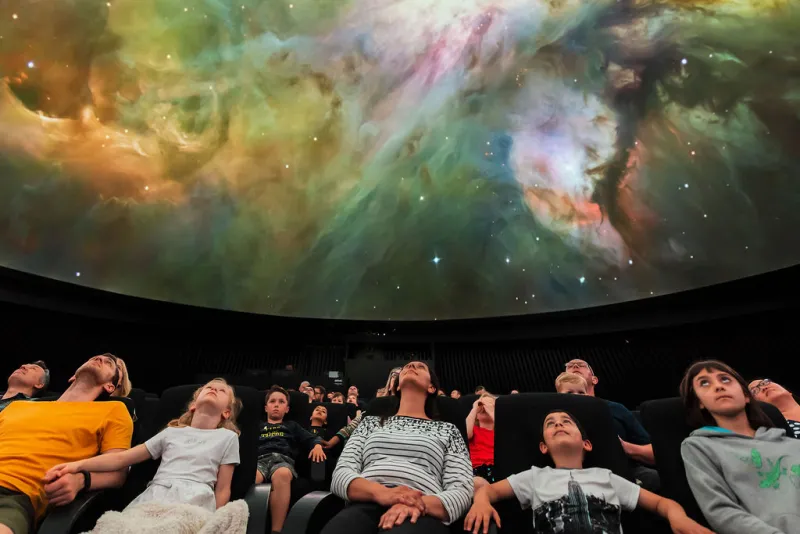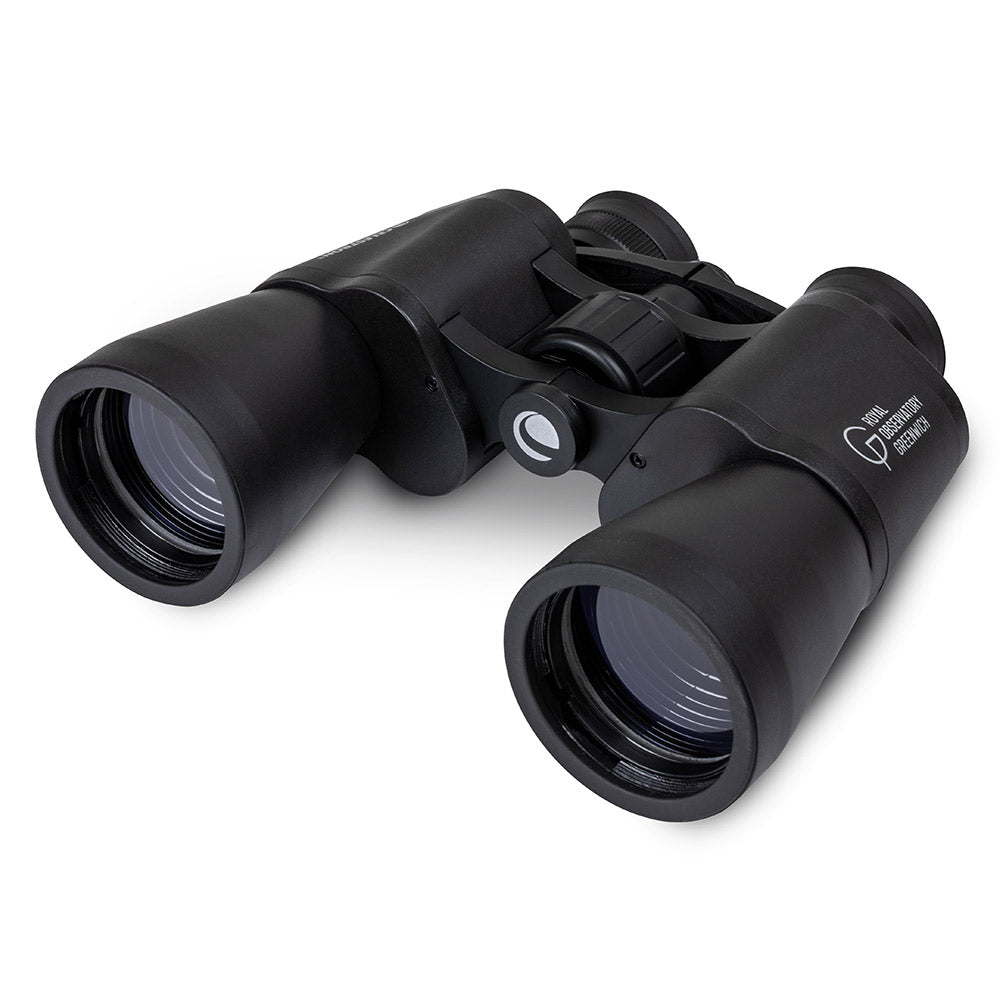
What can you see in the Solar System through binoculars or a small telescope?
With a small telescope or binoculars you should not expect to see all the fantastic detail that you can see in the pictures from space probes but there is still so much to see, enjoy and wonder at!
Buying a telescope
Most people start with binoculars as these are cheaper and can also be used for other hobbies. However, as your interest deepens, you will probably want to see further and more clearly, and this is when a telescope comes into its own. There are many on the market but the most important thing is to do your own research based on your budget, location and how much you want to see.
Viewing the Moon with a telescope
The Moon is probably the most satisfying object to look at through any telescope. The craters and mountains can be seen with even a small telescope.
The best place to look is along the line between darkness and light, called the terminator, where the Sun is either rising or setting. Here the shadows cast by mountains and crater walls are longest and can give very dramatic views. After as short a time as an hour, changes in the shadows can be seen as the sunlight reaches or leaves peaks near the terminator.
Mercury
Mercury is difficult to see with the naked eye but can be seen even in the daytime with a telescope if you know where to look.
A small disk can be seen when Mercury is close to the Earth, and phases (like the Moon's) can be seen. The disc shows phases like those of the Moon.
It appears full at Superior Conjunction (when Mercury is at its furthest from the Earth, behind the Sun) and new at Inferior Conjunction (when it is between the Earth and the Sun).
Venus
Venus can be too bright for a telescope when the sky is dark. It is generally better to look at twilight or even in the day. No surface details can be seen but through a small telescope Venus can be easily seen to have phases, like the Moon. It is very unusual for any details to be visible in the cloud structures.
Venus is best seen in the evening when it is to the east of the Sun and in the morning when it is to the west of the Sun. It is hard to mistake it for any other object as it is so bright.
When near the horizon, the effects of `twinkling' can give rise to amazing flashing colour effects which are often reported as peculiar objects, sometimes as UFOs.
Mars
Mars is often disappointing because, except near close approaches to the Earth, it shows only a small disk. The polar caps can often be seen and some of the dark markings can be seen when Mars is close. Occasionally these are obscured by enormous Martian sandstorms which can take weeks to clear away.
Even with large telescopes it is very difficult to see detail, and many experienced observers were deceived into thinking that they had glimpsed features, such as the infamous canals, that in fact were not there.
Jupiter
Jupiter has definite atmospheric bands, which can be seen in quite small telescopes. These change as the planet rotates and also can be very different from one season to another. The Great Red Spot can be seen.
Jupiter has four moons which can be seen using binoculars and these have eclipses which are always interesting and were used for one of the first determinations of the speed of light. These are the four largest of Jupiter's family of satellites which lie within the magnetosphere extending several million kilometres into space. The diameters of the biggest, Io, Europa, Ganymede and Callisto range between 3000 and 5000 km whereas the smallest, Leda has a diameter of only 10 km across.
Saturn
Saturn is often called the most beautiful of the planets with its ring system. One of its moons is easily seen. With good binoculars it can be seen to have a non-circular shape and the rings can be seen with a small telescope which will also show the largest satellite, Titan.
About every 15 years the Earth passes through the plane of the rings, which are then seen edge-on (or rather, not seen) although their shadow onto the disk of Saturn may still be visible.
Uranus, Neptune and Pluto
Uranus and Neptune look like small greenish discs through a small telescope. Pluto can only be seen in biggish telescopes.
Observation of asteroids and minor planets
Several of the minor planets can be seen, even through binoculars, but star charts and current position data will be necessary to identify them. There is only one asteroid, Vesta, that is visible (just) by the naked eye.
The best way to identify an asteroid, if its whereabouts are known, is to draw a chart of the stars around the predicted position and compare the drawing with the sky a few nights later. The motion of the asteroid relative to the stars should enable it to be identified.
The positions of the brighter asteroids are given in the Handbook of the British Astronomical Association and the Astronomical Almanac gives positions for Pallas, Vesta and Juno.
We stock a range of recommended telescopes in our shops and we also sell them online
Retrograde Mars And Uranus © Tunç Tezel | shortlisted in Astronomy Photographer of the Year 2021




